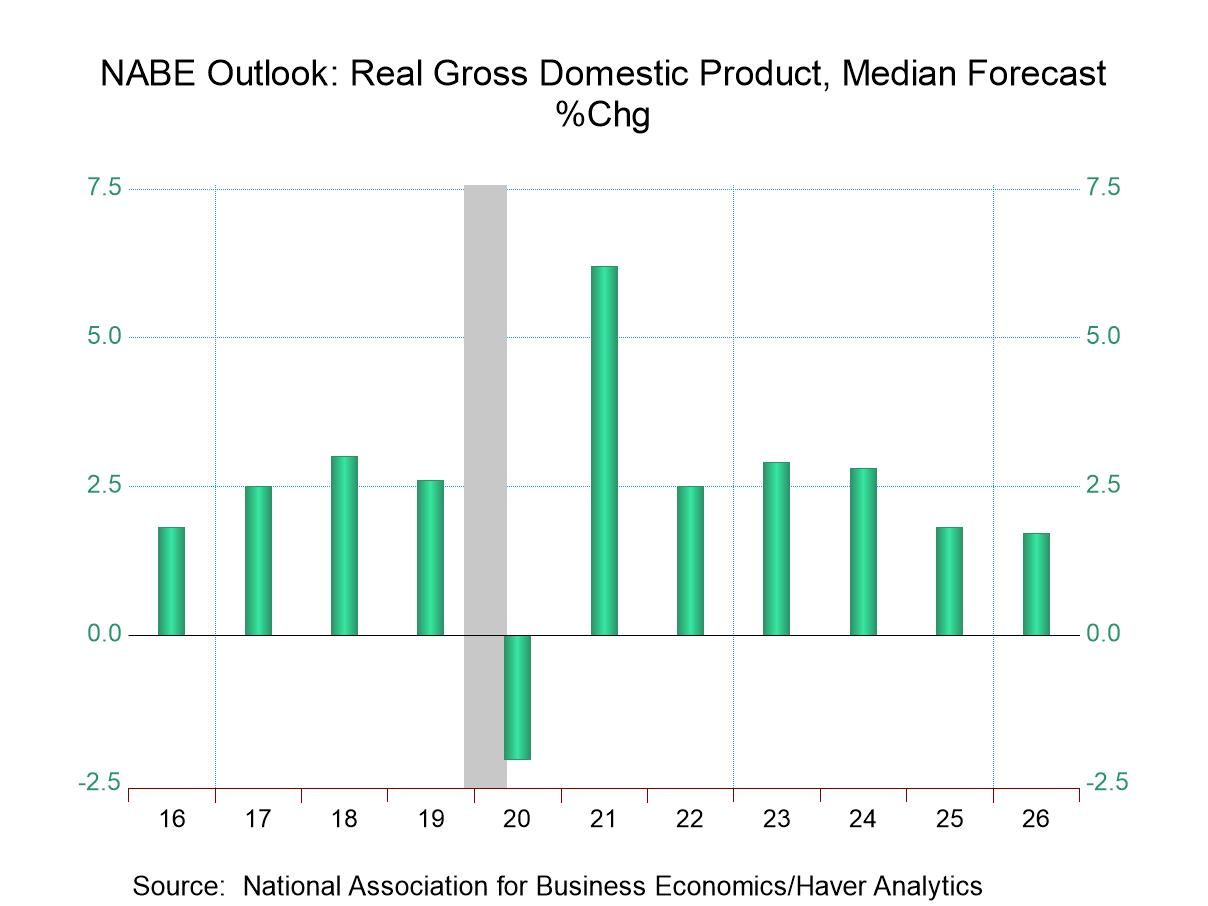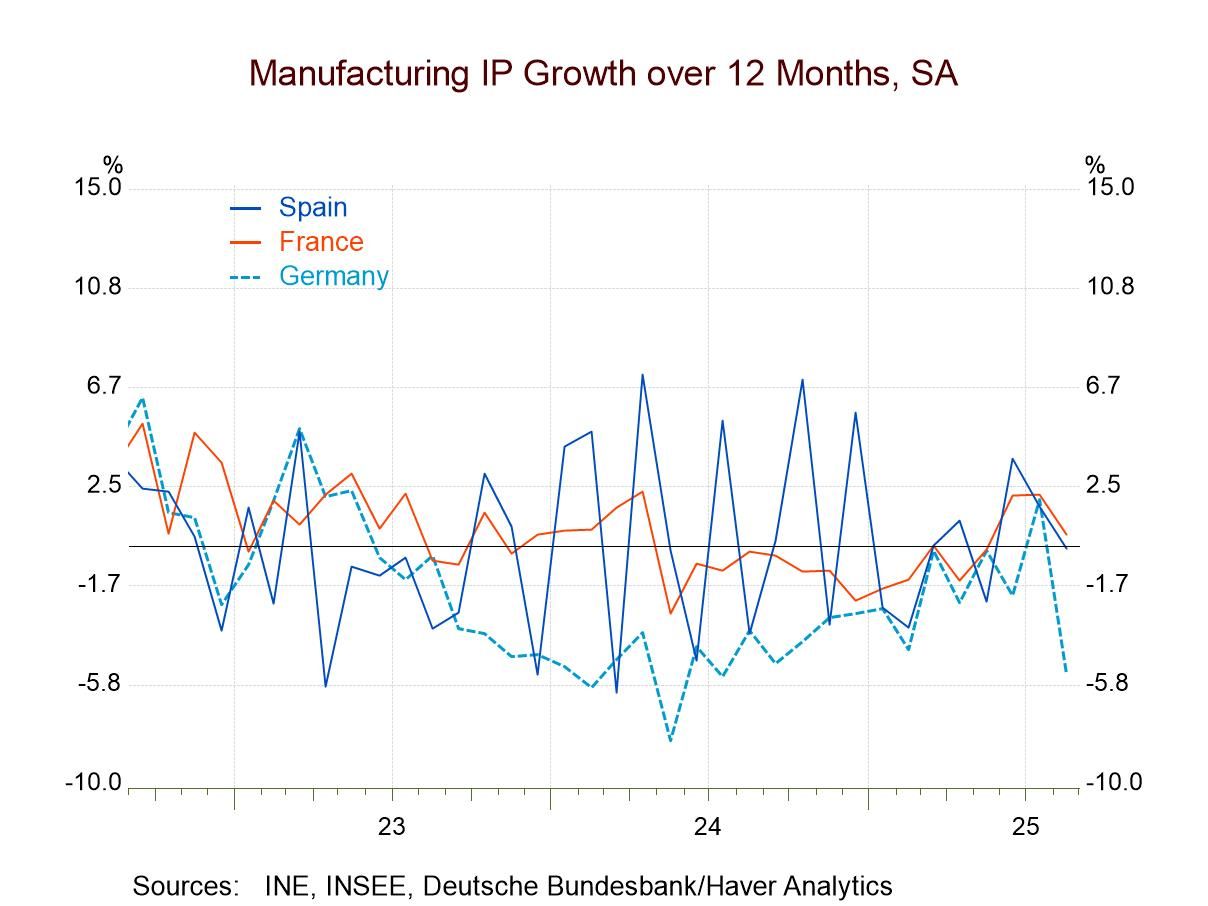 Global| Sep 22 2004
Global| Sep 22 2004South Africa Current Account Has Record Deficit in Q2
Summary
South Africa experienced its largest current account deficit ever and its first trade deficit in 22 years in the second quarter. Data reported today by the Reserve Bank of South Africa show the current account deficit at 49.3 billion [...]

South Africa experienced its largest current account deficit ever and its first trade deficit in 22 years in the second quarter. Data reported today by the Reserve Bank of South Africa show the current account deficit at 49.3 billion Rand, equal to 3.8% of GDP. The trade accounts had a deficit of 5.5 billion Rand, the first since the second quarter of 1982. Gold is, of course, a major element in South Africa's exports, and the trade deficit excluding gold was 38.1 billion Rand. Trade deficits on this basis are frequent, but this was still the largest of those by far, compared with the previous record 25.0 billion Rand in Q4 1998.
South Africa also generally runs deficits in the services and income accounts, so such deficits in Q2 are not surprising. Transfers, however, were much more negative than normal as well, adding notably to the total current account shortfall.
The negative trade performance was not the fault of exports. These grew 8.1% in Q2, and those excluding gold were stronger still, with a 9.5% gain. But imports surged 18.6%. Commentary from the Reserve Bank of South Africa indicates that petroleum was the main culprit. The South African navy also acquired a new ship, an individual transaction large enough to impact the nation's overall trade picture, at least for this quarter.
At the same time, the accompanying capital flow data show that such a large current account was more than covered by portfolio and "other" net investment flows. Moreover, the trade deficit didn't seem to impart much harm to South Africa GDP. It grew 3.9% (annual rate) in Q2, faster than the 3.1% in Q1. A large component of that growth came in inventory; private consumption and capital investment also expanded. So this one-quarter plunge in the current account balance doesn't appear to suggest any fundamental deterioration in South Africa's general economic health.
| Seasonally Adjusted Annual Rates -- Billions.Rand | Q2 2004 | Q1 2004 | Q4 2003 | 2003 | 2002 | 2001 |
|---|---|---|---|---|---|---|
| Current Account Balance | -49.3 | -14.4 | -22.1 | -10.1 | +6.7 | +0.3 |
| % of GDP | -3.8 | -1.1 | -1.8 | -0.8 | +0.6 | +0.0 |
| Exports -- % Chg | 9.5 | 5.1 | -5.4 | -10.6 | 21.8 | 21.1 |
| Imports -- % Chg | 18.6 | 1.3 | 2.0 | -6.4 | 26.9 | 16.8 |
| Balance on Goods | -5.5 | +21.0 | +14.3 | +28.6 | +48.9 | +43.9 |
| ex Net Gold Exports | -38.1 | -12.5 | -21.6 | +6.7 | +5.8 | +14.0 |
Carol Stone, CBE
AuthorMore in Author Profile »Carol Stone, CBE came to Haver Analytics in 2003 following more than 35 years as a financial market economist at major Wall Street financial institutions, most especially Merrill Lynch and Nomura Securities. She had broad experience in analysis and forecasting of flow-of-funds accounts, the federal budget and Federal Reserve operations. At Nomura Securities, among other duties, she developed various indicator forecasting tools and edited a daily global publication produced in London and New York for readers in Tokyo. At Haver Analytics, Carol was a member of the Research Department, aiding database managers with research and documentation efforts, as well as posting commentary on select economic reports. In addition, she conducted Ways-of-the-World, a blog on economic issues for an Episcopal-Church-affiliated website, The Geranium Farm. During her career, Carol served as an officer of the Money Marketeers and the Downtown Economists Club. She had a PhD from NYU's Stern School of Business. She lived in Brooklyn, New York, and had a weekend home on Long Island.





